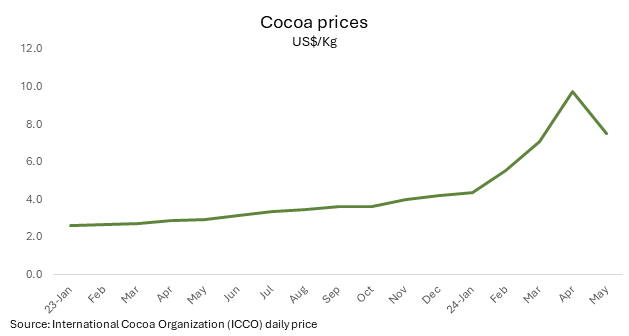
The natural gas market is currently navigating a labyrinth of supply challenges and price volatility, influenced by a complex array of geopolitical tensions, regulatory changes, and evolving market dynamics. As of March 2025, natural gas prices are fluctuating significantly, reflecting a market under pressure from both demand spikes and constrained supply channels. This situation presents a formidable landscape for industry stakeholders who must employ strategic measures to mitigate risks and harness opportunities.
Current State of Natural Gas Prices
As reported by Trading Economics, natural gas prices have been on an unpredictable trajectory. Recent data indicates that prices, while currently elevated, have experienced sharp fluctuations over the past few months. This volatility is largely attributed to geopolitical tensions, particularly in Eastern Europe, which have disrupted traditional supply routes and increased market uncertainty. Additionally, the ongoing transition towards renewable energy sources is altering consumption patterns, further influencing price trends.
Supply Challenges: A Multifaceted Issue
The supply chain for natural gas is facing unprecedented challenges. One of the primary issues is the geopolitical instability affecting major producers and transit routes. For instance, the ongoing conflict in Eastern Europe has not only disrupted supply chains but has also led to sanctions that complicate trade flows. Additionally, regulatory shifts in major consuming regions, such as the European Union's stringent environmental regulations, are impacting production processes and costs.
Moreover, infrastructure constraints continue to plague the industry. Many existing pipelines and storage facilities are operating at near-full capacity, limiting the ability to respond quickly to demand fluctuations. This bottleneck is exacerbated by the slow pace of infrastructure expansion due to environmental and regulatory hurdles.
Strategic Responses from Key Market Players
In response to these challenges, major producers and consumers are implementing diverse strategies aimed at stabilizing the market. Companies are investing in technological advancements to enhance extraction and production efficiency. Innovations such as enhanced drilling techniques and improved liquefaction processes are being adopted to reduce costs and increase output.
Furthermore, there is a concerted effort to diversify supply sources. Countries are entering into agreements with alternative suppliers to reduce dependency on traditional sources. For example, European nations have been increasing imports of liquefied natural gas (LNG) from the United States and Qatar, leveraging the flexibility of LNG to balance supply-deficit regions.
Policy Shifts and Technological Advancements
Governments across the globe are also playing a crucial role in shaping the future of the natural gas industry. Policy shifts aimed at reducing carbon footprints are prompting a reevaluation of energy policies. The European Union's Green Deal, for instance, is pushing for a significant reduction in greenhouse gas emissions, influencing the strategic direction of energy companies.
Technological advancements are being harnessed to address environmental concerns. Carbon capture and storage (CCS) technologies are increasingly being integrated into natural gas operations to mitigate environmental impact. Additionally, digital technologies are enhancing supply chain efficiency, from predictive analytics for demand forecasting to blockchain for improved transparency in transactions.
The Road Ahead: Navigating Uncertainties
Looking forward, the natural gas market is expected to remain volatile in the near term. The interplay of geopolitical tensions, policy changes, and technological evolution will continue to shape market dynamics. Industry experts suggest that while immediate challenges persist, the strategic measures being implemented could pave the way for a more resilient and sustainable market in the long run.
Investors and stakeholders are advised to monitor these developments closely. As noted by market analysts, the ability to adapt to changing conditions will be crucial for maintaining competitiveness. Strategies that focus on diversification, technological integration, and sustainability are likely to yield the best outcomes in navigating the complexities of the natural gas market.
Conclusion
The natural gas market is at a pivotal crossroads, where supply challenges and price volatility test the resilience of market participants. As the industry adapts to new realities shaped by geopolitical events and environmental imperatives, the path forward will require strategic agility and innovation. By embracing these changes, the market can not only overcome current hurdles but also lay the groundwork for a sustainable and robust energy future.
This analysis underscores the importance of strategic foresight and adaptability in navigating the dynamic landscape of the natural gas market. Stakeholders are encouraged to stay informed and proactive in their approaches to harness the potential opportunities that lie ahead.